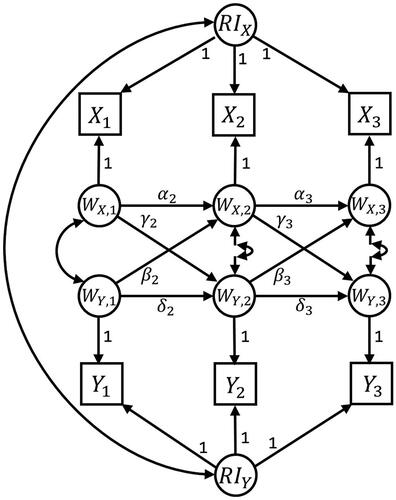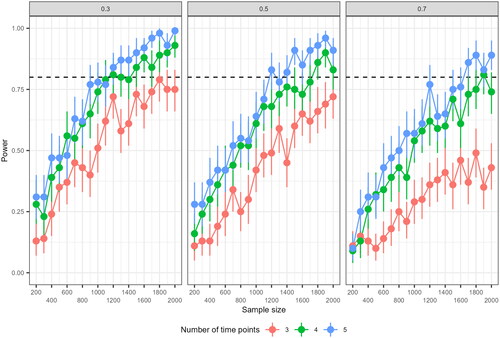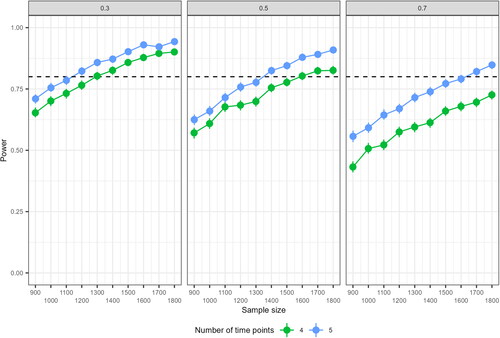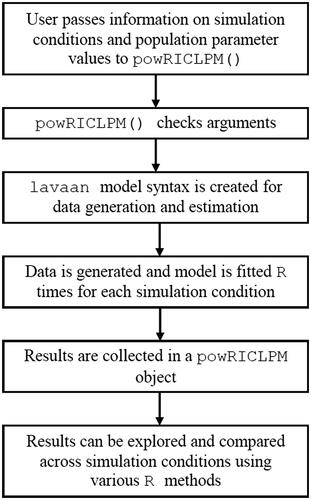Figures & data
Figure 1. A bivariate random intercept cross-lagged panel model with three waves of data. αt and δt are autoregressive effects of WX and WY, respectively. γt and βt are the cross-lagged effects of on
and
on
respectively. The mean structure with
and
is not explicitly included here.

Figure 3. Results of preliminary power analysis for the RI-CLPM, based on 100 replications, for a cross-lagged effect of 0.10 (standardized). The different panels display results for conditions with a 0.3, 0.5 and 0.7 proportion of between-unit variance, respectively. The vertical error bars represent the uncertainty around the simulated power.

Figure 4. Results of the validation phase of the power analysis for the RI-CLPM, based on 2000 replications. The different panels display results for conditions with a 0.3, 0.5 and 0.7 proportion of between-unit variance, respectively. The vertical error bars represent the uncertainty around the simulated power.


